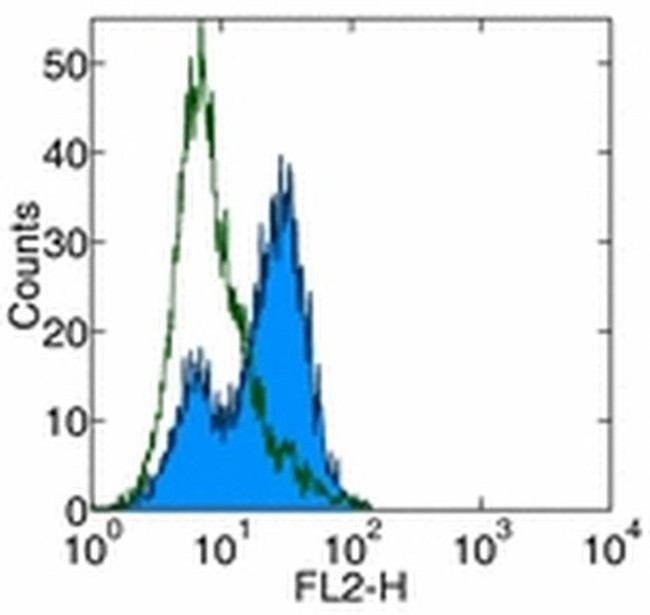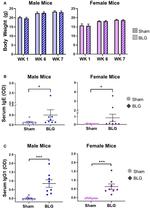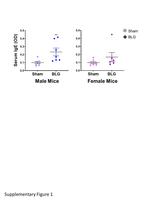Search Thermo Fisher Scientific
产品信息
11-5992-81
种属反应
已发表种属
宿主/亚型
分类
类型
克隆号
偶联物
激发/发射光谱
形式
浓度
纯化类型
保存液
内含物
保存条件
运输条件
RRID
产品详细信息
Description: The 23G3 monoclonal antibody reacts with the epsilon heavy chain of mouse IgE. It does not react with other classes of mouse immunoglobulin including IgD, IgG, IgA, or IgM.
Applications Reported: 23G3 has been reported for use in ELISA and flow cytometric analysis.
Applications Tested: This 23G3 antibody has been tested by ELISA and can be used at 1:5000-1:10000. This 23G3 antibody has also been tested by flow cytometric analysis of IGEL cells, and can be used at less than or equal to 1 µg per test. A test is defined as the amount (µg) of antibody that will stain a cell sample in a final volume of 100 µL. Cell number should be determined empirically but can range from 10^5 to 10^8 cells/test. It is recommended that the antibody be carefully titrated for optimal performance in the assay of interest.
Excitation: 488 nm; Emission: 520 nm; Laser: Blue Laser.
Filtration: 0.2 µm post-manufacturing filtered.
靶标信息
IgE is one of the five classes of immunoglobulins found in mammals. Monomers consist of two heavy (epsilon) chains with 4 Ig-like constant domains, and two light chains. IgE plays an essential role in type I hypersensitivity (allergic responses such as hay fever, asthma, hives, anaphylatic shock) by binding to Fc receptors on basophils and mast cells. Crosslinking of IgE bound to Fc receptors induces degranulation of mast cells and basophils that promote allergic manifestations. IgE is also functionally important for immunity against parasites.
仅用于科研。不用于诊断过程。未经明确授权不得转售。
How to use the Panel Builder
Watch the video to learn how to use the Invitrogen Flow Cytometry Panel Builder to build your next flow cytometry panel in 5 easy steps.







